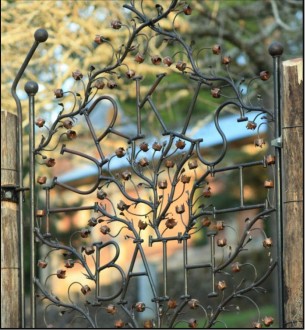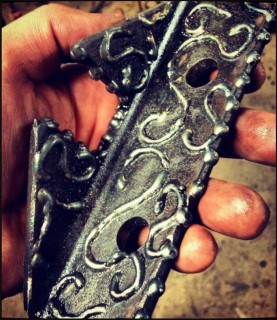Just a Welder Knocking Stuff Together
- Details
First, the idea of the gate was from the Historical Society, wanting to make access a bit more obvious to the general public. Tim approached me with an old gate that Wendy had found on Wynstay, but frankly, it was beyond help. So we started with a blank canvas. I also was happy to give something back to the Historical Society that has worked tirelessly to preserve what little history we have left. I never really start with any diagrams and Tim never made any suggestions.I just thought, what's the purpose of the art-piece I'm making? And away we go.
I just draw a mental picture in my head. It's the same with all my work.
So it's the entrance to the Turkish Bath right? Now call me old fashioned, but some of the folks floating around nowadays aren't the sharpest tools in the shed, so I thought it would be best to incorporate 'Turkish Bath' into the gate to spare Peter having people wander into the gate house.
Second, I wanted it to be a bit old school with the tempered steel latch, like the other gates on Wynstay, and as a bonus, they are childproof. So the body is hand shaped cold from various diameter steel bars. I bend it cold because I get smoother radiuses than if I heat it in the forge. It's a slow process of bit by bit. I lay it on the ground, stand back and ponder. If it looks right, it usually is. So I start at the base and slowly work towards the top.
The copper flowers start off as an 18 metre roll of 3/4" annealed copper pipe. I cut the pipe into 3 metre lengths, then cut it lengthways. Then I cut them into little lengths of 55 mm, with pliers I then bend them flattish, then onto the anvil to beat the crap out of them. I end up with a roughly square bit of copper. I weld a length of 4 mm fencing wire to the centre of it and then with shears, cut the copper 8 times radiating out from the base of the stem. I hand bend it roughly into the shape of a rose bud then it goes onto the end of my anvil, and with a soft face hammer, shape it further. It's fiddly stuff. The small leaves are 4 mm fencing wire heated in the forge and then beaten flat on the anvil.
The latch is heated and cooled in a way that gives it spring. The same process the blacksmith at Wynstay would have used 100 years ago. It's a nice gate and will be here for a long time to come with the odd coat of used motor oil.
Scott Leonard
Taken from the February 2013 Mt Wilson & Mt Irvine Historical Society Newsletter.

